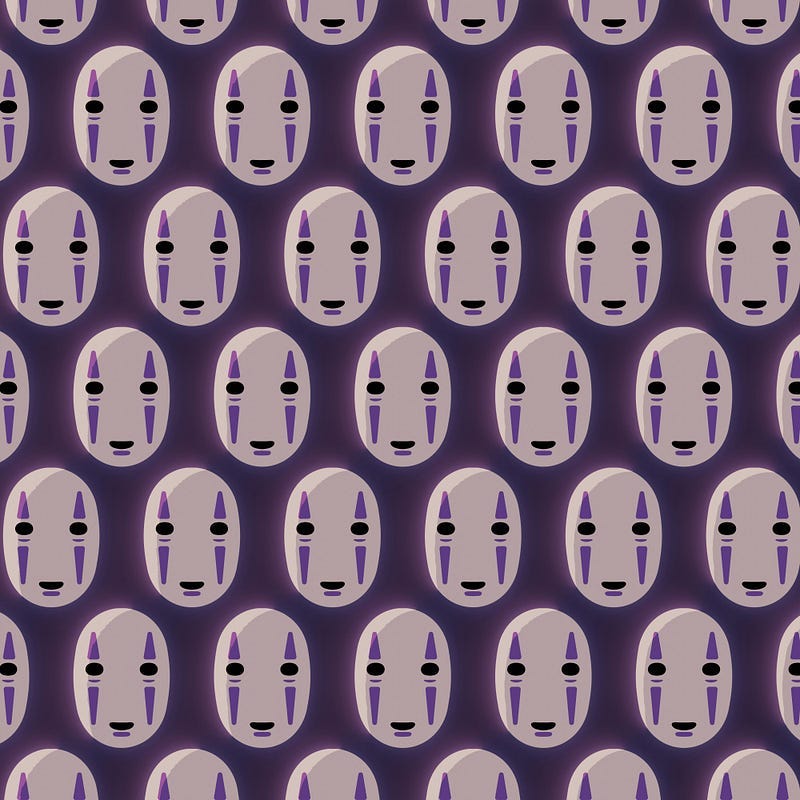AI Studio Ghibli "Art" Is Way More Disturbing Than You Think.
Your humanity is being stolen from you.
What makes Studio Ghibli films so captivating? Maybe it’s the stillness and rumination in the air when Chihiro catches the train with No-Face or the way Kiki manages to find a sense of belonging in a world that seems desperate to reject her. Maybe it’s the compassion and empathy shown in Howl’s Moving Castle, where insides are more important than outsides — unless, of course, someone accidentally rearranges your haircare potions and dyes your hair ginger. Whatever it may be, Hayao Miyazaki’s films have a special knack for reaching deeper into your soul than any other and bringing a soft, warm glow to the pockets of feeling you didn’t think existed anymore. Personally, I can attest to this. Having been recently diagnosed as autistic, these films have greatly helped me understand my reality and my place in this world. After all, there’s a reason these movies are more than just cult classics — they are beloved pillars of millions of people’s identities, communities, and journeys of self-understanding. This is why the AI Studio Ghibli trend is so violating. As Miyazaki stated through Shun Kazama, “There is no future for people who worship the future and forget the past,” and sadly, this toxic trend is buried in the machinations of fascism.
If you hadn’t noticed, over the past week, the internet was flooded with AI-generated images in the style of Studio Ghibli. Long-dead memes were dragged from their coffins to cosplay as Miyazaki creations. Sure, some family photos were given the wholesome veneer of Ghibli’s artwork, but other world leaders were butchered to fit into the aesthetics of this fictional world. This all happened due to a new version of OpenAI’s ChatGPT, which has been trained on Miyazaki’s art and can now replicate it. Needless to say, the legality and ethics of using such copyrighted material are deeply questionable, but despite this, people have flocked to OpenAI to make their own Ghiblified content.
**Quick interruption. If you like my work, don’t forget to check out my latest video essay on YouTube or Subscribe with the button below to get these articles early and join my monthly movie club.**
In 2016, Miyazaki stated that AI “is an insult to life itself”, causing many AI-obsessed users to slam headfirst into cognitive dissonance and throw up phantasms (personal distortions of reality) to justify their Ghibli AI creations. One article went as far as to claim that this quote was taken out of context and that Studio Ghibli’s aim was to make the mundane magical, which these AI images (apparently) achieved. Not only is this woefully ignorant of the philosophy behind Studio Ghibli, but it also totally ignores the reality of art, its function in society, and its history — particularly its history in Miyazaki’s lifetime. That is the broader context needed to understand this quote and why this AI art trend is so insidious.
So, here’s a question: What is the purpose of art?
To just look pretty?
To convey a message?
Or do different works of art have different purposes?
Well, there is an incredibly persuasive argument that all art is existential in nature. It doesn’t mask reality but rather works to expose a profound truth about human nature.
This idea was solidified by Heidegger in his work The Origin of the Work of Art. He argues that art expresses an element of truth of the creator’s human experience and the culture that informs it. Revealing this truth creates collective understanding, empathy, and a sense of community, as it inherently answers people’s existential questions, like What does it mean to be human? What is good or morally right? What is a just society? As such, art not only brings people together but is inherently critical of the status quo and highlights how we should move forward.
Many philosophers, such as Nietzsche, Sartre, and Camus, subscribe to this belief, and it is easy to see why. No matter how reductive, art can be understood and described using this framework.
But what happens when this fundamental notion of art is twisted to cruel ends?
Keep reading with a 7-day free trial
Subscribe to Will Lockett's Newsletter to keep reading this post and get 7 days of free access to the full post archives.


